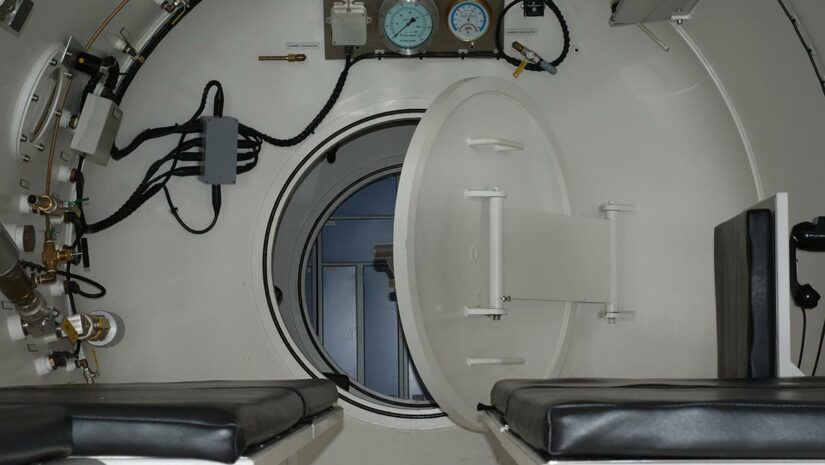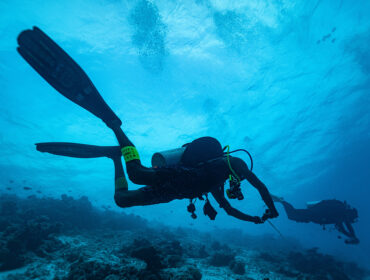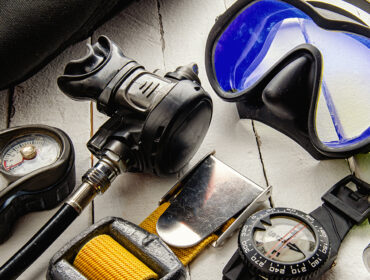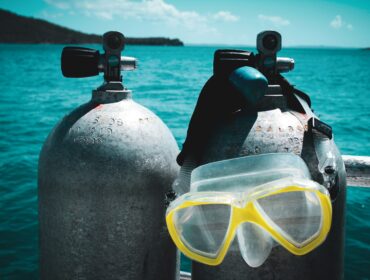As open water divers, you learn about one of the biggest risks of scuba diving: Decompression Sickness (DCS). Sometimes called “the Bends,” “Divers Disease,” or “Caisson Disease,” DCS is caused as the nitrogen absorbed from breathing compressed air underwater remains in the body’s fatty tissues and blood because of the ambient water pressure. Many divers refer to a hyperbaric chamber as a recompression or decompression chamber, although they technically used differently.
When the pressure around the diver decreases (i.e on ascent) the nitrogen starts coming out of the tissues back into the blood stream. However, if you reduce the pressure too quickly, the nitrogen starts forming bubbles in the tissues and bloodstream rather than through exhalation, causing decompression sickness or decompression illness.
For treatment, it’s crucial to administer 100% oxygen to the patient and transfer them the nearest hyperbaric chamber or recompression facility for immediate medical attention. But how exactly does the hyperbaric chamber — also known as recompression chamber, decompression chamber or even diving chamber — work for decompression sickness?
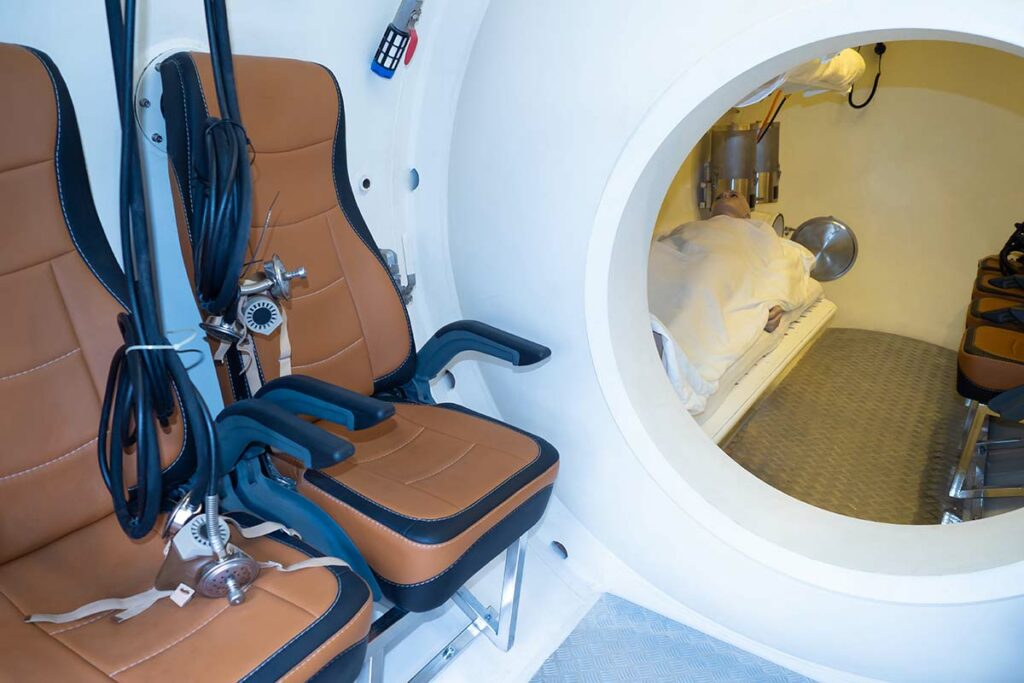
What Is a Hyperbaric Chamber?
A hyperbaric chamber is a container big enough to hold people while also holding gases at a specific pressure. In this case, you receive 100% oxygen and the internal pressure of the chamber increases.
The main pressure chamber connects using separate airlock chambers with hatches to allow patients entry and exit. The airlocks independently pressurize to not compromise the pressure in the main chamber. An intercom or walkie-talkies are available for communicating with anyone in the chamber.
How Does Hyperbaric Oxygen Therapy Help for Decompression Sickness?
The therapeutic principle behind hyperbaric oxygen therapy lies in its ability to drastically increase partial pressure of oxygen in the tissues of the body. In other words, cells repair themselves more efficiently when exposed to a higher oxygen content via the blood. Although the hyberbaric chamber itself is the same in most cases, it has different use cases. That said, there are two ways that this treatment can help when it comes to scuba diving:-
- Decompression Chamber: A hyperbaric chamber used by surface-supplied (typically commercial) divers to make their decompression stops.
- Recompression Chamber: A hyperbaric chamber used to treat or prevent patients suffering from decompression sickness.
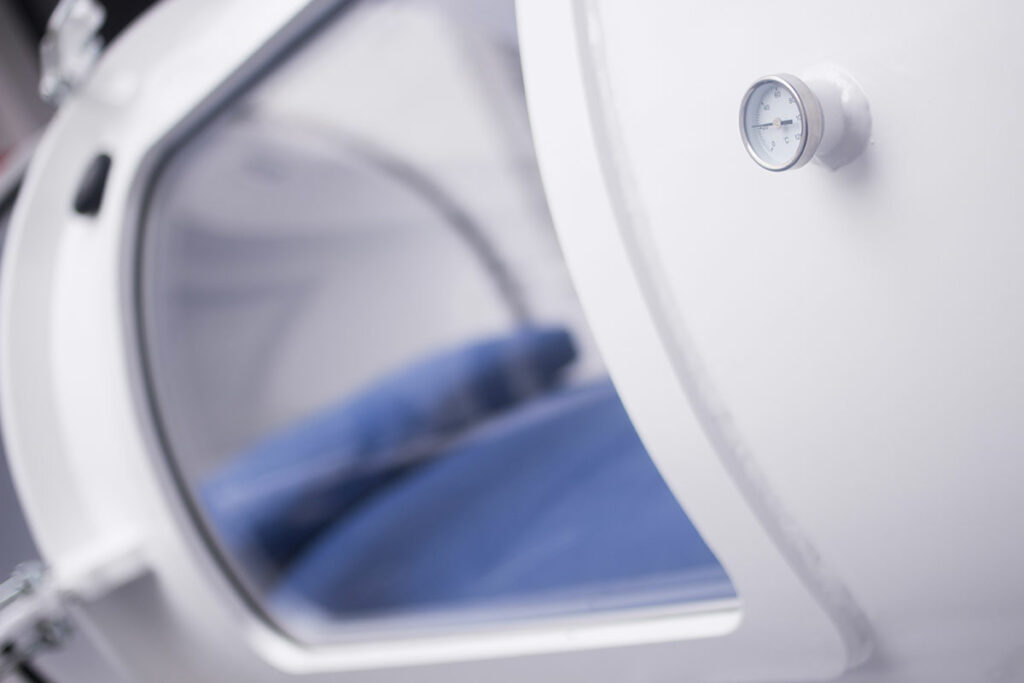
What is a Decompression Chamber?
The purpose of a decompression hyperbaric chamber is to allow surface-supplied gas divers to complete their decompression stops in a chamber rather than underwater.
For this purpose, decompression chambers can be submersible in the water. For a submersible chamber though, the hatch opens into a moon pool chamber. Then its internal pressure must first equalize to that of the moon pool chamber before opening the hatch. More commonly, the hatch opens into an underwater airlock similar to those used in submarines and underwater living habitats. In this case the main chamber’s pressure stays constant, while it is the airlock pressure which shifts.
However, non submersible decompression chambers are more common. The diver surfaces and immediately enters the decompression chamber to complete the time they would have normally spent underwater decompressing. This reduces the risks for divers diving in cold waters or in risky underwater conditions. Not to forget, this method of decompressing is mostly used in the case of commercial diving, which involves divers working for hours underwater at depths far beyond traditional recreational diving. Because of which they also spends hours (sometimes as long as 18 hours) for the decompression process.
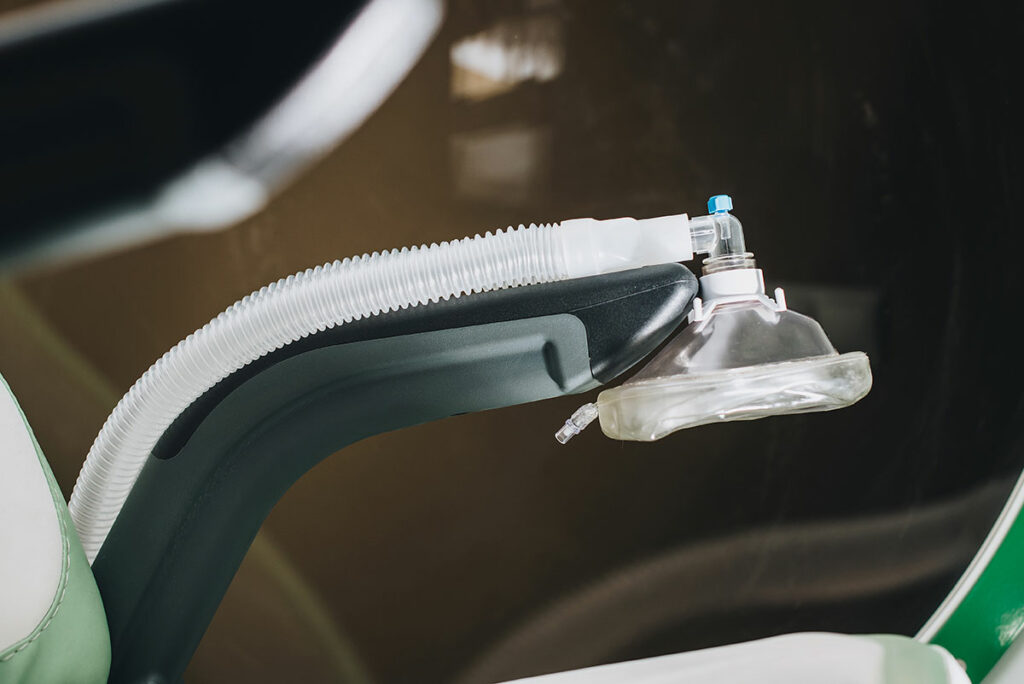
What is a Recompression Chamber?
A hyperbaric chamber used for those divers who already have or show symptoms of Decompression Sickness is known mostly as a recompression chamber.
We’ve seen that, as long as the diver remains at pressure, the nitrogen gas absorbed by breathing compressed air underwater, presents no problem. However, when the pressure around the diver decreases the nitrogen starts coming out of the tissues back into the blood stream. If the pressure is reduced too quickly, the nitrogen starts forming bubbles in the tissues and bloodstream rather than being exhaled, just like when you open a bottle or can of soda, it releases the pressure causing the carbon dioxide gas to lose its solubility and escape in the form of bubbles or fizz.
How Does a Recompression Chamber Work?
As a recompression chamber pressurizes, it re-simulates the pressure conditions as if the diver were underwater. By putting the patient back under pressure, it’s like putting the cap back on a soda bottle, and stopping the fizz from escaping. The pressure causes the nitrogen bubbles to become soluble again, thereby stopping them from escaping from through the tissues and bloodstream. A (very) risky alternative to a recompression chamber is actually sending the diver back underwater and under pressure to stop the gas bubbles that are causing DCS symptoms. It is called in-water recompression and is only considered as a last resort if the diver is too far from a hyperbaric chamber, and it’s a question of life or death. It doesn’t treat DCS as well as an actual recompression chamber because, it lacks the 100% oxygen supply.
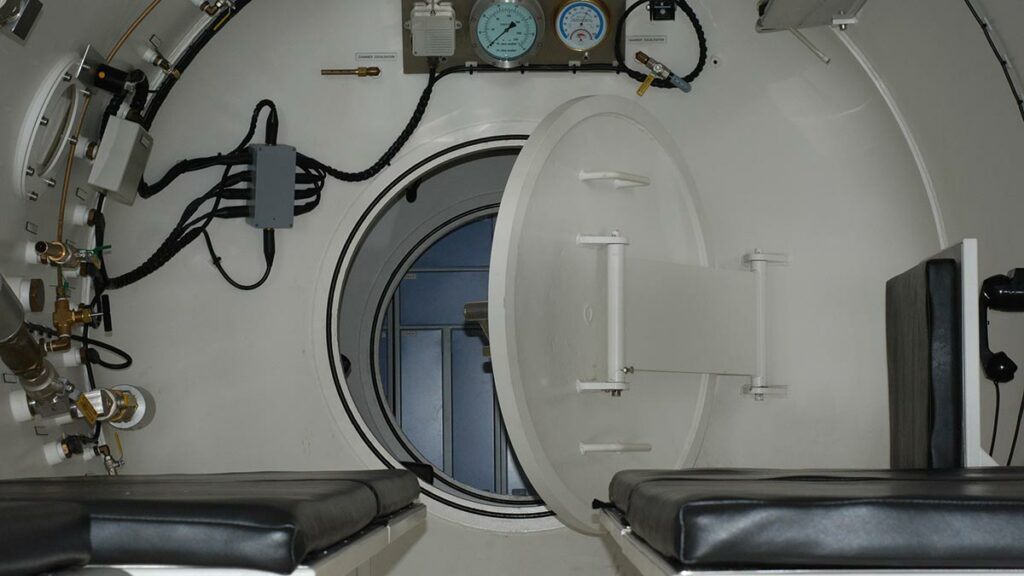
Hyperbaric Chamber & Oxygen Therapy
In a hyperbaric chamber for recompression, the patient receives 100% oxygen under the pressure of the chamber. So, Hyperbaric Oxygen Treatment (HBOT) serves the dual-purpose of the oxygen encouraging the cells repair themselves more efficiently, while at the same time eliminating the excess nitrogen from the blood. Which is why it’s the most effective treatment of Decompression sickness and has become the standard of care procedure to know the nearest facility offering this treatment.
Avoiding Decompression Sickness
Decompression sickness is a risky condition, and severity of it can even cause death. But…and there is a big BUT, it is always avoidable by maintaining a safe ascent rate and by keeping within your decompression limits with a conservative dive plan. So if you’re an average recreational diver like many of us out there, keep in mind to always ascend slow, wear a dive computer with an ascent rate alarm and avoid risking a decompression dive just for a few extra minutes of dive time at a depth. If you have to ascend a few meters or feet to avoid exceeding your bottom time, do it! Ascend slowly though. You can still enjoy the dive from a shallow depth and you’ll even get more time.

